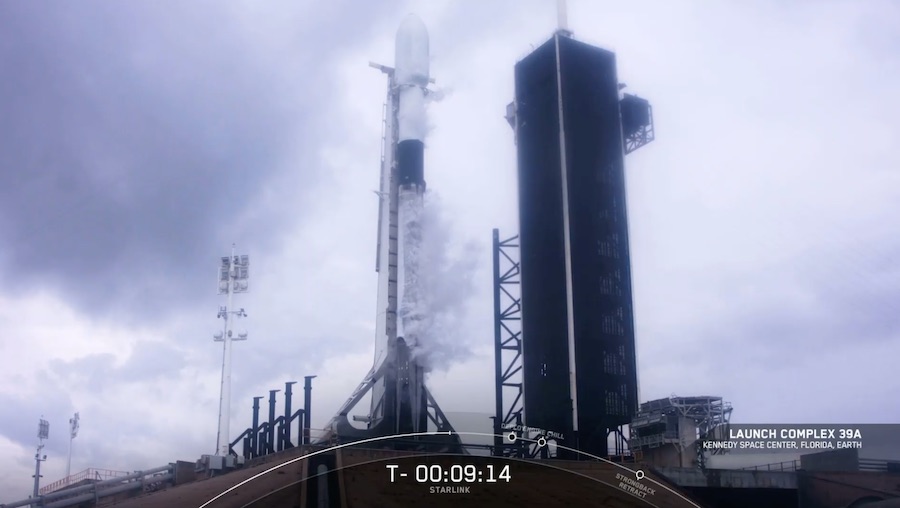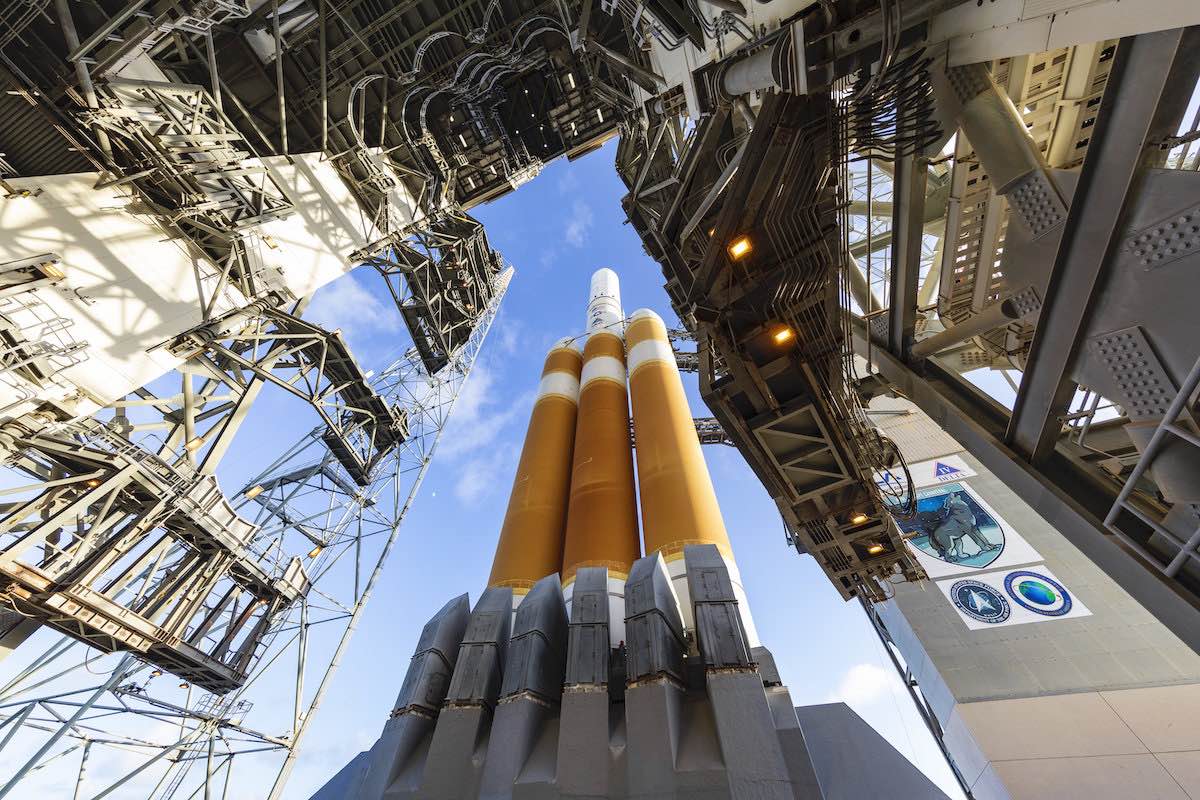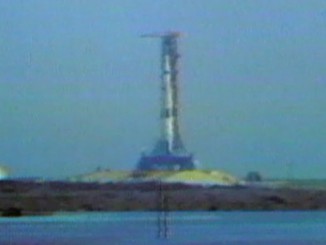
Continuing a dizzying series of rescheduled launches from Florida’s Space Coast, poor weather at the Kennedy Space Center forced SpaceX to keep a Falcon 9 rocket and 60 Starlink broadband satellites on the ground Monday. The Starlink launch is expected to be delayed until Thursday, after a pair of national security missions are set to blast off from Cape Canaveral Tuesday.
SpaceX halted the Falcon countdown Monday around 30 seconds before a liftoff from pad 39A that was scheduled for an instantaneous launch window at 10:22 a.m. EDT (1422 GMT). The company’s launch conductor said the countdown stopped due to weather violations.
SpaceX did not immediately set a new target launch date, but sources said the next opportunity to launch the mission will be Thursday at around 9:17 a.m. EDT (1317 GMT).
Two rocket flights with U.S. national security payloads will take priority on the Eastern Range’s launch schedule at Cape Canaveral.
A United Launch Alliance Delta 4-Heavy rocket is set for liftoff at 12:02 a.m. EDT (0402 GMT) Tuesday from pad 37B at Cape Canaveral Air Force Station. Its mission, codenamed NROL-44, will deploy a classified cargo for the National Reconnaissance Office, the agency which owns the U.S. government’s spy satellites.
Assuming the Delta 4-Heavy gets off the ground early Tuesday, SpaceX will ready a separate Falcon 9 rocket and a GPS navigation satellite for liftoff from pad 40 at Cape Canaveral during a 15-minute window opening at 9:55 p.m. EDT Tuesday (0155 GMT Wednesday).
The three back-to-back launches — none directly related to the other — are planned from separate pads on the Space Coast.
The Delta 4-Heavy rocket — the most powerful in ULA’s fleet — was originally supposed to launch in late August with the NROL-44 mission. ULA scrubbed a launch attempt Aug. 27 to investigate an issue with a launch pad pneumatics system, then a computer sequencer commanded a hold just three seconds prior to liftoff Aug. 29 due to a failure in a pressure regulator associated with one of the rocket’s three hydrogen-fueled main engines.
The Aug. 29 countdown stopped after one of the rocket’s three RS-68A engines had ignited. ULA’s launch team announced the aborted countdown as a fireball erupted at the base of the rocket, a fiery feature normally observed during the Delta 4-Heavy’s engine startup sequence.
The rocket was later drained of cryogenic propellants, and ULA engineers traced the problem to a pressure regulator on the launch pad designed to flow helium gas to spin up rocket’s center engine for ignition. The regulator for the center engine did not open, prompting the countdown’s automated sequencer to stop the countdown.
Tory Bruno, ULA’s president and CEO, tweeted that engineers refurbished and tested all three pressure flow devices at pad 37B before proceeding with another launch attempt.
ULA set Sept. 26 for the next launch attempt for the NROL-44 mission, but officials delayed the mission again to investigate a concern with the swing arm retraction system at the Delta 4-Heavy’s seaside launch complex at Cape Canaveral. The swing arms, which feed liquid propellants and conditioned air to the vehicle, are designed to quickly retract away from the rocket at liftoff.

ULA announced early Monday that the Delta 4-Heavy rocket was on track for its launch opportunity just after midnight Tuesday, Florida time.
The 235-foot-tall (71.6-meter) Delta 4-Heavy rocket will arc toward the east from Cape Canaveral over the Atlantic Ocean, targeting a near-circular geosynchronous orbit more than 22,000 miles (nearly 36,000 kilometers) near the equator.
While the NRO has not disclosed any details about the Delta 4-Heavy’s payload, analysts believe it is likely a signals intelligence satellite with a giant antenna that will be unfurled in space to stretch as big as a football field. If the analysts are correct, the spacecraft will intercept telephone calls and data transmissions from U.S. adversaries.
The Falcon 9 rocket scheduled to blast off from pad 40 Tuesday night will loft the U.S. Space Force’s next Global Positioning System spacecraft, the fourth in the latest generation of GPS navigation satellites made by Lockheed Martin.
The GPS 3 SV04 spacecraft joins three previous Lockheed Martin-built GPS 3-series satellites launched in December 2018, August 2019, and June 30 of this year.
But the official weather forecast at Cape Canaveral is iffy for the NROL-44 and GPS missions Tuesday. There’s a 60 percent chance of good conditions for launch of the Delta 4-Heavy rocket early Tuesday, and just a 40 percent probability of acceptable weather for the Falcon 9 launch Tuesday night with the GPS satellite.
If the NROL-44 and GPS missions take off as scheduled, SpaceX could launch its Falcon 9 rocket from pad 39A Thursday with the next 60 Starlink satellites.
SpaceX has launched 715 Starlink satellites to date, and is nearing the halfway point in a series of missions since to place some 1,440 broadband relay stations into orbit to provide high-speed Internet services over most of the world.
SpaceX has regulatory approval from the Federal Communications Commission to launch up to 12,000 Starlink satellites for global broadband service, and SpaceX has signaled its intention to seek authority to put up another 30,000 Starlink platforms in the coming years.
Email the author.
Follow Stephen Clark on Twitter: @StephenClark1.



